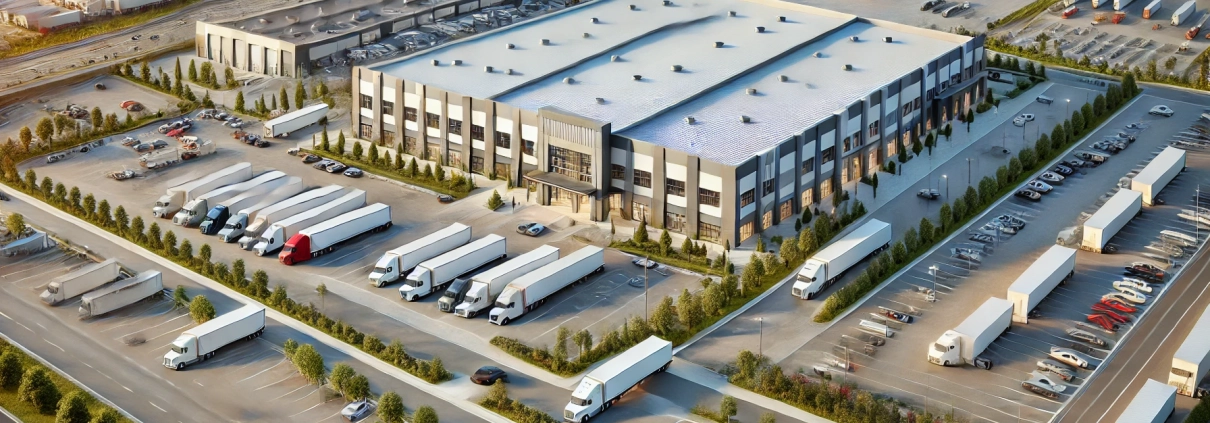Holdback
A holdback is a portion of commercial loan proceeds that are retained by the lender until certain objectives have been met. These objectives may include conditions like a certain percentage of development has been completed or a certain NOI is achieved at the property. Holdback proceeds are generally held in an escrow account.
Putting ‘Holdback’ in Context
Ironbridge Equity Partners, a real estate private equity firm specializing in value-add industrial properties, recently acquired Windy City Logistics Center, a 250,000-square-foot warehouse and distribution facility located in the outskirts of Chicago, IL. The property was purchased for $12 million, with plans to invest an additional $2.5 million in capital improvements, including roof repairs, HVAC upgrades, and parking lot resurfacing, to reposition the asset as a modern Class B+ facility.
To finance the acquisition and redevelopment, Ironbridge secured a $10 million bridge loan from a regional lender. The loan included a $1.5 million holdback provision, meaning those funds would only be released as the redevelopment reached key milestones.
Holdback Triggers and Escrow
The lender required the holdback to be placed in an escrow account until two specific conditions were met:
- Completion of at least 75% of the planned capital improvements.
- A stabilization milestone of achieving a net operating income (NOI) of $1.2 million, representing an 85% occupancy rate at market rents.
Progress and Accessing the Holdback
Ironbridge’s construction team completed 75% of the planned renovations within six months, satisfying the first condition. Upon submission of detailed progress reports and third-party verification, the lender released $750,000 from the escrow account to reimburse Ironbridge for construction expenses.
The remaining $750,000 holdback was tied to the property’s lease-up performance. Over the following eight months, Ironbridge successfully signed leases with three tenants, bringing the occupancy rate to 90% and achieving an NOI of $1.25 million. This performance exceeded the lender’s stabilization requirement, triggering the release of the final $750,000.
Financial Impact
By leveraging the holdback structure, the lender mitigated its risk exposure, ensuring Ironbridge executed the value-add business plan as intended. For Ironbridge, the structured release of funds allowed them to manage cash flow effectively during the property’s transformation while accessing the full loan proceeds as milestones were met.
Key Takeaway
This hypothetical case illustrates how a holdback operates in the context of a value-add acquisition. By tying disbursement of funds to clear, measurable objectives, both the borrower and lender align incentives, ensuring the successful execution of the investment strategy.
Frequently Asked Questions about Holdbacks in Commercial Real Estate Finance
What is a holdback in commercial real estate?
A holdback is a portion of loan proceeds that are retained by the lender until the borrower meets specific objectives such as construction milestones or financial performance. These funds are typically held in an escrow account.
What was the holdback amount in the Windy City Logistics Center deal?
Ironbridge Equity Partners secured a $10 million bridge loan that included a $1.5 million holdback provision.
What conditions had to be met for the holdback to be released?
Two conditions were required:
Completion of at least 75% of the capital improvements
Achieving an NOI of $1.2 million with 85% occupancy
Each condition released $750,000 from the escrow.
How was progress verified for the holdback release?
Ironbridge submitted detailed progress reports and third-party verification, which the lender used to confirm 75% completion of renovations before releasing funds.
Did Ironbridge meet the stabilization requirement?
Yes. Ironbridge achieved 90% occupancy and $1.25 million in NOI, exceeding the lender’s requirement of 85% occupancy and $1.2 million in NOI. This triggered the release of the final $750,000.
Why do lenders include holdback provisions?
Holdbacks help mitigate lender risk by tying loan disbursements to objective milestones, ensuring the borrower follows through on the business plan before accessing full funds.
How did the holdback structure benefit Ironbridge?
It helped Ironbridge manage cash flow effectively while completing renovations and stabilized the property. The structure ensured access to full loan proceeds once milestones were reached.
What type of project was Windy City Logistics Center?
It was a value-add industrial redevelopment of a 250,000-square-foot warehouse near Chicago, involving $2.5 million in capital improvements to reposition the property.
What is the key takeaway from the holdback example?
The example shows how a holdback aligns lender and borrower incentives by linking disbursements to performance. It ensures accountability and supports execution of the value-add strategy.
Click here to get this CRE Glossary in an eBook (PDF) format.

